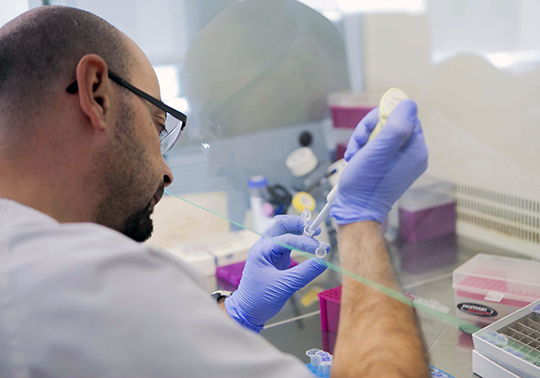Semen’s quality depends on subpopulations and not on individual characteristics of spermatozoa
- January 10th, 2017

The Universitat de València and Proiser R+D compant, in Parc Científic, have brought to light that, contrary to popular belief, the sperm quality does not depend on individual characteristics of spermatozoa, but is the joint action of subpopulations which propitiate the fertilisation in the female genital tract. The work of this university-company tandem holds the last monographic of the Asian Journal of Andrology.
Researchers of the Department of Cellular Biology, Functional Biology and Physical Anthropology of the Universitat de València and the biotechnological company Proiser R+D, situated in Parc Científic, have just published a research in spermatozoon’s morphometric which opens up new avenues to male fertilisation in a wide range of species with internal fecundation.
Proposed from the spermatozoon’s morphometric, in its evolutionary and reproductive aspects, and intended to correctly identify the function of spermatozoa in reproduction, the research demolished the assumption based on the researches in male fertilisation, which stemmed on the idea that each “healthy” spermatozoon was suitable for fertilising oocytes. And now provides a new perspective when describing that it is the joint action of spermatozoa’s subpopulations which propitiate the fertilisation in the female genital tract. “The fact that only one spermatozoon is sufficient to achieve a pregnancy, along with the irruption of intracytoplasmic sperm injection (ICSI), has delayed the research in spermatology, especially in humans”, says the biologist Carles Soler, professor of the Universitat de València and scientific director of Proiser.
The studies, which correlate clinical data, evolutionary aspects or production of seminal doses with the morphometric results obtained from the evaluation of the morphology of computer-aided sperm, are presented in a special monograph of the Asian Journal of Andrology - the first In index of impact in the field of Andrology-, coordinated by Carles Soler himself, who has acted as editor. This is a compendium of 15 articles by researchers from different research centers and universities, mainly from the Spanish state (University of Aragon-Huesca, University of Murcia, Castilla-La Mancha University, Universitat de València and INIA). Spain in the international leadership of sperm morphology.
Proiser R+D is a biotechnological company born a decade ago which aiming to generate computational systems of seminal analysis both human and animal species. It is a world leader in sperm analysis systems called CASA (Computer Assisted Semen Analysis), with full implementation in the field of human and veterinary reproduction. "Among other things, the papers presented in this monograph show how the usefulness of the equipment and the research work to correlate the clinical data with the morphometric results, generate a series of observations on the subpopulations of spermatozoa in fertile and infertile men, which Could explain the currently inexplicable causes of infertility, "says Soler.
The research opens up new avenues to investigation in fields of basic biology, human reproduction medicine and veterinary medicine. http://www.asiaandro.com/artsmore.asp?id=147
File in: Investigació a la UV , Biologia Cel·lular, Biologia Funcional i Antropologia Física , Parc Científic , Col·laboració amb empresa , Grups de recerca















